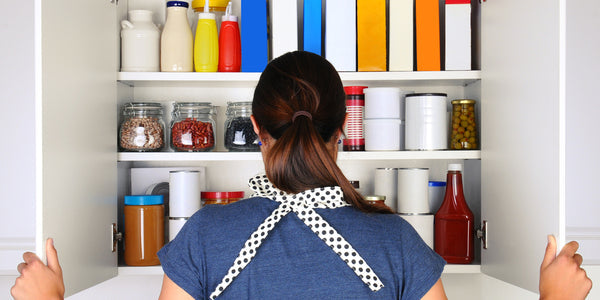
You go to Mom's for some good, old-fashioned home cooking. You sit up to the table, mouth watering, and she serves you a plate with a heaping pile of white sugar, another of pile bleached flour, a scoop of lard and a meatball between a couple chunks of diced tomato.
Yum, yum! Eat up!
Proportionally, that wouldn't be too far off what most Americans are eating nowadays, even with Mom's good home cooking.
Eating better very often is a discussion about what we eat and how it's affecting our health and it revolves around the massive portions we receive in our restaurant meals and the high-fat, high-sugar foods and snacks we consume that someone else prepares for us.
But research shows that even when we're actively feeding ourselves, most of us are not doing a very good job of it. We've gotten used to those cheap and gigantic restaurant servings, so we're using the super scoop at home more often. We're busier, so we're buying more quick-and-easy processed items and less fresh food. We're eating in front of the TV more, so we're cramming down more food unconsciously while we're distracted by our shows.
In fact, you could argue that a lot of the problems Americans have with their eating habits are due to unconscious factors. Really, how often have you said to yourself, "Hmmm, I guess I'll have a big, syrupy waffle and bacon to add to my high cholesterol and weight problem."
More than likely, that just seemed like a yummy choice at the time. By the time people start being aware of how poorly they've been eating and start thinking, "Oh, I really shouldn't," most are already overweight.
So how do you start eating better? When it comes to what we eat at home, those automatic, unconscious habits start in the grocery store. What we choose at the store limits what we can choose at home, so it's important to make those grocery shopping choices steer our eating habits in a healthy direction.
Grocery store marketing is a fine science of rigorous research and trial and error. You can bet that if you've suddenly come across a product you haven't thought about purchasing before, it's no accident. Placement, signage, lighting and positioning all play a role in how likely you are to buy a product.
While they're all a little different, grocery stores are set up in particular ways to encourage sales of certain kinds of foods, usually those foods that are high-profit items. And that usually means poor nutritional value, because the most highly-processed foods are the cheapest to mass produce and have the longest shelf lives.
Think about it. Your fresh produce, dairy and meat products are almost always situated around the perimeter of the store, while there's aisle after aisle of packaged, processed and frozen foods right in the middle, and on every endcap and on display tables near the checkouts, with candy and other treats on little shelves by the registers. That's good for grocers, but not necessarily for you when you eating better.
So even though these foods are placed in the most prominent areas of the store, you don't have to buy in. By thinking of yourself as a discriminating shopper and being more conscious when you're food shopping, your choices at the store can begin to make a big difference in your diet and your health.







